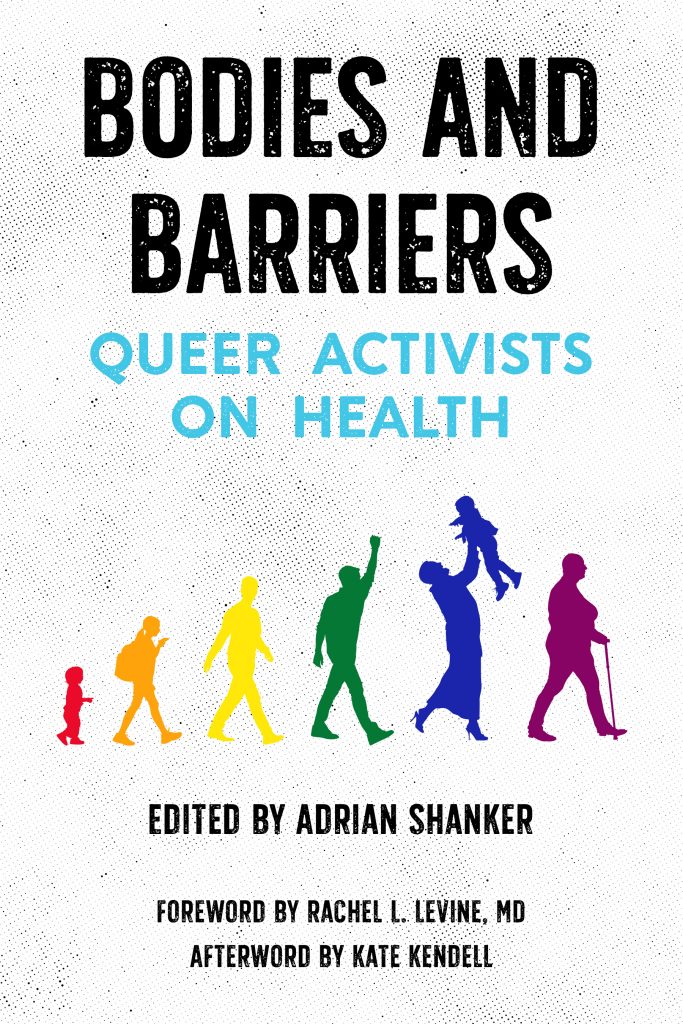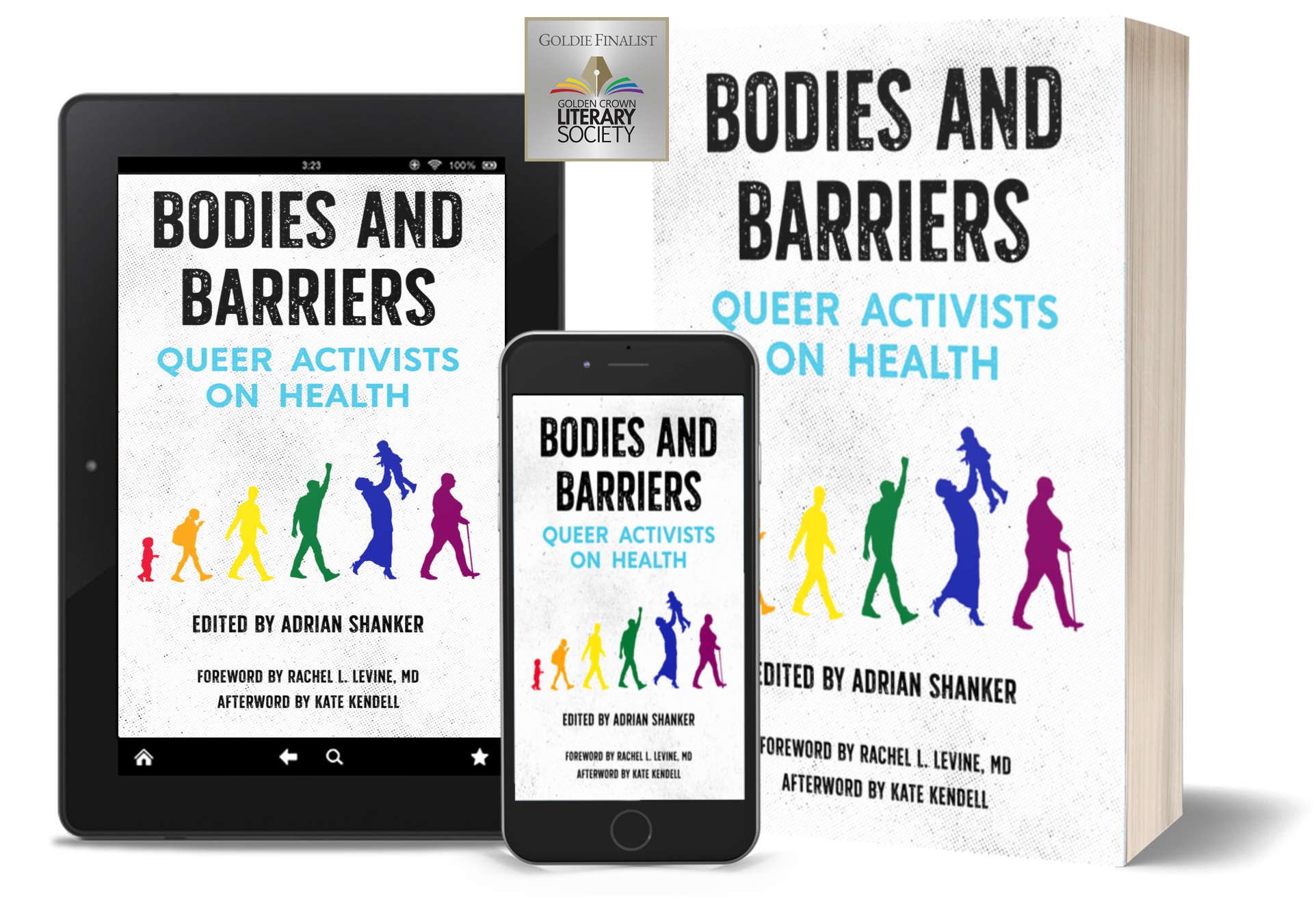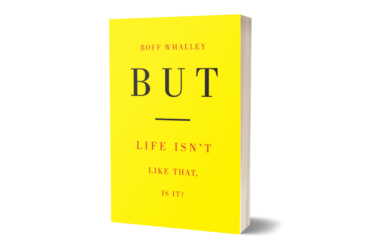By Yiting “Ferdy” Huang and Diana Tran
University of Pittsburgh Physician Assistant Studies Newsletter
June 2021
In light of pride month, we conducted an interview with Adrian Shanker, a vocal activist involved in LGBTQ+ health issues, to shed light on gaps in accessing healthcare for LGBTQ+ communities and the ways we could address it as future providers.
Could you briefly describe who you are and what you do?
Professionally, I lead Bradbury-Sullivan LGBTQ Community Center located in Allentown, PA. As an organization we provide arts, health, youth and pride programs as well as support groups and advocacy. Our health work really looks like health promotion or behavioral change, clinical training and health advocacy (policy/structural changes) to remove barriers to care that keep LGBTQ+ Pennsylvanians from achieving what the US government defines as health equity in attaining the highest quality of health for all people.
My book is Bodies and Barriers: Queer Activists on Health. It is a comprehensive collection of first-person narratives, essays by real life people sharing their own experiences about the healthcare information and services that they’ve tried to receive and what those experiences have been like. It is not meant to be a downer, some of the experiences are negative, but this book is about providing that opportunity for healthcare providers to shift that conversation and to provide the best possible care for the LGBTQ patients. More information about the book can be found: www.pmpress.org/bodiesandbarriersand the link to my website: www.adrianshanker.org
or more information on the Bradbury-Sullivan LGBT Community Center: www.bradburysullivancenter.org

What are some of the most significant barriers the LGBTQ+ community faces when accessing healthcare?
Barriers are like stumbling blocks, getting in the way of achieving health equity. They are like hurdles; the more hurdles there are, the harder it is to navigate through an unfair system of healthcare. Barriers to care exist for all populations, but for minoritized and marginalized populations, those barriers to care are even greater. From my lens, addressing the LGBTQ health equity, some of those barriers to care are:
Geographic: Not having access to clinicians or clinical spaces that specialize in the LGBTQ healthcare that we need. For example, entire counties that don’t have trans affirming endocrinologists or [infectious disease] doctors that specialize in HIV treatment.
Intake forms: Forms that are not responsive to our lived experiences are a barrier to care, forms that force people to check boxes that do not feel right for us.
Providers: For example, PrEp (Pre-Exposure Prophylaxis). There is no reason for a primary care physician to not know how to manage PrEP, but many primary care clinicians say they don’t know how to do it. Or being told that the care that is provided isn’t available for people like us. For example, an endocrinologist who specializes in providing hormone therapy but not hormone therapy for trans people.
Waiting room experiences: Rooms that are sending a message that it does not care for LGBTQ populations. For example, clinics for breast cancer treatment, mammograms or OB/GYN are often all pink. This sends a message to those seeking care for that body part (lesbians, queer women, trans men, non-binary trans masculine people) who cannot do that without the feminization of that body part.
What we know from data is that LGBTQ+ Pennsylvanians overwhelmingly say that they experience negative health experiences in their past and as a result, fear going to see a healthcare provider in the future. Barriers to care and negative past experiences result with people who fear seeking healthcare. Which means they won’t go get their physical, flu shot, cancer screening, and are less likely to get HIV testing on a regular basis.
Do you have an anecdote of an unsuccessful healthcare experience from someone from the LGBTQ community, which led them to not return to that clinic/provider or stop seeking care in general?
Yes, I can share from my book an example. From my own experience: (Adrian reads)“I made an appointment with a dermatologist for a baseline screening for skin cancer. But at every turn the doctor’s well-intentioned team made me question if I should be there at all. The intake forms were unnecessarily restrictive, biased news programming was on full-display in the waiting room, magazines in the waiting room did not cater to patients like me, and comments from the clinic staff displayed brazen cultural incompetence. I didn’t go back for the doctor-recommended follow-up. I’m privileged with health insurance, access to private transportation, and the ability to take time away from my job to drive a distance for a medical appointment, so I was able to find a new LGBT-inclusive dermatologist an hour away. For many other LGBT consumers of healthcare, the geographic barrier to accessing culturally appropriate LGBT-inclusive care from a specialist might be too great a barrier to overcome.”
And I’ll share another quick one from Robin Ochs, who is a bisexual woman from Boston. She shares from her experience:“In my twenties, during an annual check-up with a new primary care physician, we had the following conversation:
Physician: “Are you sexually active?”Me: “Yes.”Physician: “What kind of birth control do you use?”
At the time, I was in a monogamous relationship with a woman. I wanted to reply, flippantly, “We use the lesbian method.” But I wasn’t that brave. I hemmed and hawed and squirmed uncomfortably and finally managed to state that my partner is a woman. It was awkward and uncomfortable. A couple of years later, that relationship had ended, and I was in a new relationship with a man. I suspected there was a note in my chart saying I was a lesbian, and I finally, awkwardly, told my doctor, “I’m bisexual,” and got fitted for a diaphragm.”
Do you mind elaborating, from your experience, what was said or done that was overlooked during your care?
From my experience in the dermatologist office, the intake form gave two options: married or single. This doesn’t allow people to express their more nuanced relationship status. From a public health and clinical standpoint, the information that a clinician needs to know is “do you have someone who can take care of you or live with you, who can remind you to [take care of your health].” They don’t need to know your legal arrangement, they need to know your health arrangement. Another question on the intake form was the gender question: male or female, which is reductive. The biased news programming that was on display in the waiting room was a fox news debate about gay rights, which added to the already stressful appointment. At a dermatologist office, it is a vulnerable visit, having to disrobe completely and put on a skimpy gown that doesn’t cover you at all as the provider looks at every inch of your body. In my clinical visit, it wasn’t shared in advance that there would be multiple people in the room and the clinician brought an intern with him who was female presenting, which I may have been okay with if I was given the chance to provide consent for somebody to observe. I decided that I did not feel comfortable going back to that clinician.
I am a pretty good self-advocate and found an LGBTQ inclusive dermatologist an hour away from me. At that clinic, it was a night-and-day difference. The intake form had multiple fill-in-the-blank options so that I could put down exactly how I wanted to be known to the clinician instead of check boxes. Instead of a Fox News debate on the TV, they had, instead, a slideshow of advertisements of some things you’ll be talking to your doctor about, which I thought was more appropriate. There were LGBTQ magazines in the waiting room which made me feel more comfortable. When I met the doctor, he shook my hand and actually sat down, asked me what I do, and was interested in why I switched dermatologists. It was a warmer experience.
We have to remember that patients are people and that healthcare has a public health element and benefits when people get the health that they need. It costs less to do prevention than treatment. And there are some healthcare issues that are transmitted if not dealt with early. That is why it is so important to remove these barriers to care and get people into prevention and treatment early to live long, healthy lives. We want to enjoy our prideful, beautiful, healthy queer bodies for a long time and we can only do that if we live in a world where we can access the care that we need.
Having a discussion on how to treat patients from diverse populations, include LGBTQ+ community, is very important and there are certain programs that do not have this information in their curriculum. How might we make this a more included topic in healthcare programs around the nation?
Historically, for medical school, 1 lecture hour was dedicated to LGBTQ health. Today, it is 4 lecture hours. But there needs to be an entire course that focuses on diverse patient populations, because when we assume we can treat all people the same, what we do is leave people behind. It should be the responsibility of health professional schools to train the next generation of healthcare professionals to be more responsive and more knowledgeable about the healthcare needs of diverse patient populations. It is also on students in health professions to seek out opportunities in clinical training and coursework to understand the unique challenges of different populations. There is an approach to healthcare that this generation of healthcare professionals will understand better than previous generations and our lives are multidimensional and intersectional, and understanding the barriers to care across cultures. I am optimistic about healthcare because I think the next generation gets it so much better.
What are some specific things we could do as healthcare providers to advocate for LGBTQ+ members in healthcare settings?
There are a couple of areas: first, healthcare professionals have to maintain continuing education credits. Committing to focus on diverse populations and unique healthcare needs is one way. Another is to be knowledgeable enough to advocate across disciplines such as nurses and doctors in the same clinical space. And lastly, stay connected to the community and offer healthcare opportunities for LGBTQ+ people such as marketing specific services such as the flu shot or HIV testing for LGBTQ+ people in a non-judgy way. I like to tell the story of when our community center first opened. One of the first opportunities we offered was HIV testing and a client walked into my office after his test and handed me $30 and said “I want to donate my copay” even though it was a free test. He said he went to his doctor for an HIV test and his doctor asked him “how come you have sex with so many people?” He felt so ashamed and left the doctor’s office without getting his test done. He donated his $30 and said “keep HIV testing free and non-judgy for everyone.” This is what it looks like to have inclusive healthcare. Shame and stigma prevent people from receiving the care that they need. As the next generation of healthcare providers in this country, you have a role in offering those non- judgy services, destigmatizing sensitive issues and ensuring that patients feel that you, as a provider, are safe to be honest and forthcoming with. If they are not, they are not going to get the best care that they need. You cannot provide the best care for queer people if you do not know who your queer patients are.
What are some things we can do or ask to build a trusting, non-judgmental, respectful relationship with LGBTQ community members when they come into our office?
First, you can share your pronouns. If you have the opportunity, review the intake forms to make sure it was inclusive to include things like their pronouns or their chosen and legal names. Simple things like that could really make or break the healthcare experience for the patient. And then, of course, to be knowledgeable enough about LGBTQ healthcare needs to be able to answer people’s questions which a lot of providers are not able to do. For example, in 2018, Pennsylvania’s former Secretary of Health, Dr. Rachel Levine, announced that Pennsylvania had an outbreak of Hepatitis A and that overwhelming majority of new Hep A infections were among gay and bisecual men. The spread of Hep A is traditionally talked about in terms of handwashing. It is spread through oral and fecal contact and not because gay people didn’t wash their hands. The public health world did not know how to talk to gay and bisexual men about how Hep A was being sexually transmited. My organization launched a campaign called “The Taste of Peaches,” and we partnered with Grindr sending in-app messaging with ways to learn more about how Hep A is transmitted, and to consider the vaccine to keep you safe and healthy. I asked my PCP how many people had come into his office and asked about the Hep A vaccine, and he said no one, (even) with a declared outbreak. That’s because all of the efforts were focused on handwashing, not vaccination, even though there was an FDA approved vaccine. Providers need to be knowledgeable to inform their patients. This is only one of so many examples.
What are some resources that healthcare providers can go to seek out more information?
As students, talk to your program directors about the benefits of having guest speakers on these topics or course work that is more intersectional because it is essential to providing the best quality healthcare that America will need. There are also associations like GLMA, which is an organization for LGBTQ+ healthcare professionals, with a lot of PAs who are members. There is also Fenway Institute, which provides continuing education credits including some that are free and online. Ultimately, I think students can advocate within their programs and ask for more resources that focus on the diverse patient populations in our communities.
Where can we find information about you, your organization and your book?
The Bradbury-Sullivan LGBT Community Center – We have information about our public health campaigns and the LGBTQ Health Needs Assessment, which looks at the social determinants of health and barriers to care (HIV, tobacco/alcohol use, mental health, access to house and transportation) to get a better understanding of the LGBTQ health needs in our state.

Adrian Shanker is an award-winning activist and organizer whose career has centered on advancing progress for the LGBT community. He has worked as an arts fundraiser, labor organizer, marketing manager, and served as President of Equality Pennsylvania for three years before founding Bradbury-Sullivan LGBT Community Center in Allentown, PA, where he serves as executive director. An accomplished organizer, Adrian has led numerous successful campaigns to advance LGBT progress through municipal nondiscrimination and relationship recognition laws and laws to protect LGBT youth from conversion therapy. A specialist in LGBT health policy, he has developed leading-edge health promotion campaigns to advance health equity through behavioral, clinical, and policy changes.






